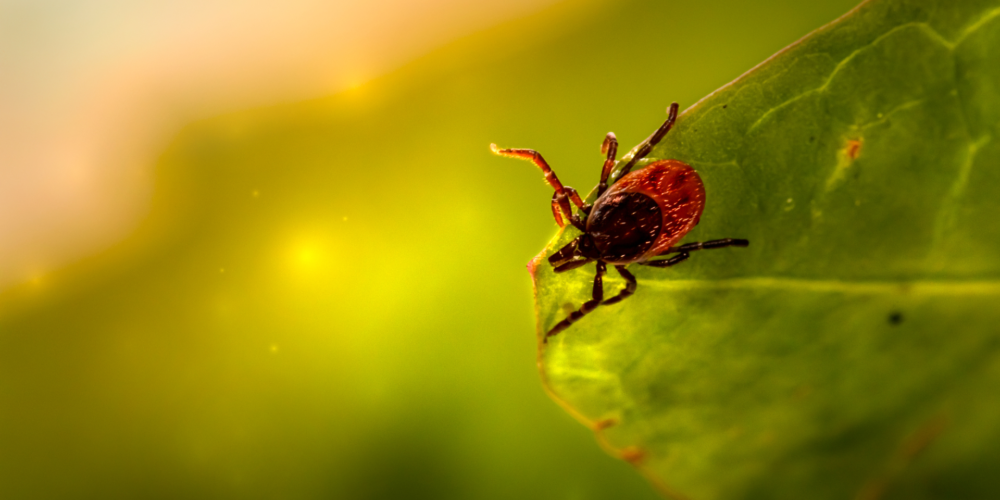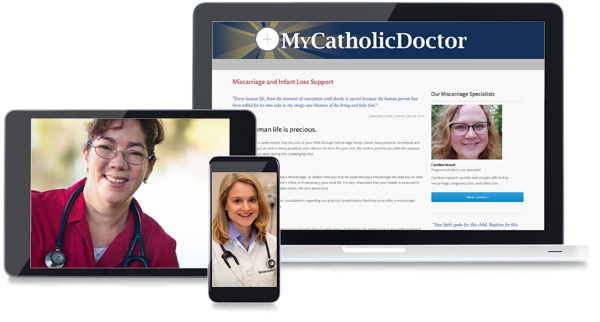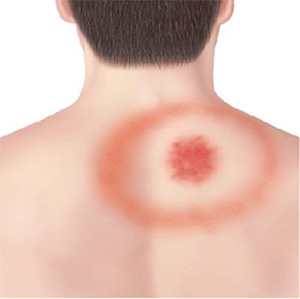Yes, lyme disease can be treated over telehealth. If you don’t have the characteristic Lyme disease rash, your doctor might ask about your medical condition history, including whether you’ve been outdoors in the summer where Lyme disease is common, and might order lab tests for you at a local center near you. Lab tests to identify antibodies to the bacteria can help confirm or rule out the diagnosis.

Early signs and symptoms of lyme disease include a small, red bump, similar to that of a mosquito bite, appearing at the site of a tick bite or tick removal and resolves after a few days. This normal occurrence doesn’t indicate Lyme disease.
However, these signs and symptoms can occur within a month after you’ve been infected:
- Rash – from three to 30 days after an infected tick bite, an expanding red area might appear that sometimes clears in the center, forming a bulls-eye pattern. The rash (erythema migrans) expands slowly over days and can spread to 12 inches across. It’s not typically painful or itchy but might feel warm to the touch.
- Fever, chills, fatigue, body aches, headache, neck stiffness, and swollen lymph nodes can accompany the rash.

Why Choose MyCatholicDoctor?
If untreated, new signs and symptoms of Lyme infection might appear in the following weeks to months. These include:
- Erythema migrans. The rash may appear on other areas of your body.
- Joint pain. Bouts of severe joint pain and swelling are especially likely to affect your knees, but the pain can shift from one joint to another.
- Neurological problems. Weeks, months or even years after infection, you might develop inflammation of the membranes surrounding your brain (meningitis), temporary paralysis of one side of your face (Bell’s palsy), numbness or weakness in your limbs, and impaired muscle movement.
Several weeks after infection, some people develop:
- Heart problems, such as an irregular heartbeat
- Eye inflammation
- Liver inflammation (hepatitis)
- Severe fatigue
Example of Tick Bullseye

Only a minority of tick bites leads to Lyme disease. The longer the tick remains attached to your skin, the greater your risk of getting the disease. Lyme infection is unlikely if the tick is attached for less than 36 to 48 hours.
If you think you’ve been bitten and have signs and symptoms of Lyme disease – particularly if you live in an area where Lyme disease is common – contact your doctor. Treatment for Lyme disease is more effective if begun early.
You should also make an appointment with your doctor even if signs and symptoms disappear – the absence of symptoms doesn’t mean the disease is gone. Untreated, Lyme disease can spread to other parts of your body for several months to years after infection, causing arthritis and nervous system problems. Ticks can also transmit other illnesses, such as babesiosis and Colorado tick fever.
Lyme disease is caused by four main species of bacteria. Borrelia burgdorferi and Borrelia mayonii cause Lyme disease in the United States, while Borrelia afzelii and Borrelia garinii are the leading causes in Europe and Asia. The most common tick-borne illness in these regions, Lyme disease is transmitted by the bite of an infected black-legged tick, commonly known as a deer tick.
You’re more likely to get Lyme disease if you live or spend time in grassy and heavily wooded areas where ticks carrying Lyme disease thrive. It is important to take common-sense precautions in tick-infested areas.
Antibiotics are used to treat Lyme disease. In general, recovery will be quicker and more complete the sooner treatment begins, so it is important that you make an appointment with a doctor as soon as you think you might have symptoms.
- Oral antibiotics. These are standard treatments for early-stage Lyme disease.
- Intravenous antibiotics. If the disease involves the central nervous system, your doctor might recommend treatment with intravenous antibiotics for 14 to 28 days. This is effective in eliminating infection, although it may take you some time to recover from your symptoms.
After treatment, a small number of people still have symptoms, such as muscle aches and fatigue. The cause of these continuing symptoms, known as post-treatment Lyme disease syndrome, is unknown, and treating with more antibiotics doesn’t help.

At MyCatholicDoctor, we are committed to making Catholic healthcare accessible. Our doctors are committed to care for the whole person – body, mind and spirit. We are pro-life and pro-eternal life.
Thank you for supporting pro-life healthcare.
Please Support Our Pro-life Healthcare
- Pray for MyCatholicDoctor. We invite you to join us at 3 p.m. everyday as we pray the Divine Mercy Chaplet in our own Chapel.
- Choose MyCatholicDoctor for your own healthcare. Do you need labs checked? Need covid Care? We are here to help you.
- Prayerfully consider supporting us financially through a tax deductible donation to our 501(c)(3) not-for-profit foundation. Your donation will directly support providing healthcare.

Our Patrons

Fax: (203) 590-8644
Mailing Address: 1180 Newfield Ave., Stamford, CT 06905
© 2023 MyCatholicDoctor. All rights reserved.
 Notice to California Patients: Medical doctors licensed in California are licensed and regulated by the Medical Board of California. To check up on a license or to file a complaint go to www.mbc.ca.gov, email: [email protected], or call (800) 633-2322. Please also see this notice regarding the Open Payments Database.
Notice to California Patients: Medical doctors licensed in California are licensed and regulated by the Medical Board of California. To check up on a license or to file a complaint go to www.mbc.ca.gov, email: [email protected], or call (800) 633-2322. Please also see this notice regarding the Open Payments Database.


